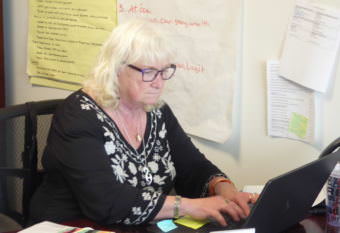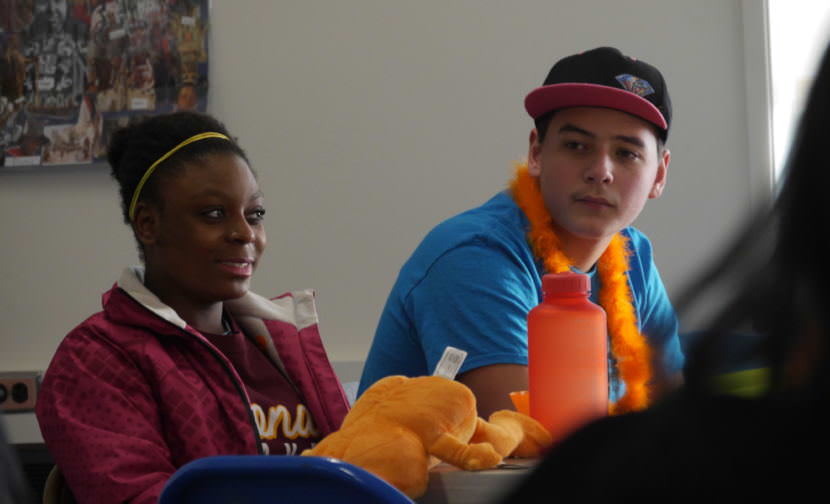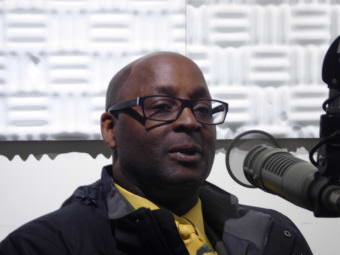
In the state Capitol building, legislators are in a stalemate arguing over two spending bills, while almost 40 miles to the west PJ Ford Slack is hammering out a final report to the local school board.

Ford Slack is the outgoing superintendent for Hoonah City Schools — a remote district on Chichagof Island that expects to serve 106 kids next year.
Ford Slack calls Hoonah the “canary in the coal mine” for rural Alaska schools – a metaphor that references an old warning system for miners.
“They used to send the canaries down to see if there was gas and if the canaries died, then that wasn’t a safe place to go,” Ford Slack said.
Thanks to budget tightening, the district lost three teachers in three years. Last year, they laid off the music teacher.
“That’s a 50-year-old music program. Southeast is really big on music and that was a really strong program. We lost a teacher before that; we lost a special ed teacher this year,” Ford Slack said.
Hoonah and other public schools face three budget possibilities for next year: flat funding in the House budget, a 5 percent cut in the Senate budget, or something between those two.
So I asked Ford Slack, “What would flat funding under the House bill look like for Hoonah?”
“Well, it isn’t really flat funding. I mean I realize that I would probably vote for that, rather than the Senate bill,” Ford Slack said.
She said flat funding under the House bill is more like a 1 to 2 percent cut because costs always go up.
The district whittled its budget down from $800,000 in the red to a deficit of about $197,000. Then to make it balance, Ford Slack said they made cuts.
“So we cut custodial positions, we’ve cut a teacher’s position, we’ve reduced our paras to six hours,” she said.
Paraeducators work with Hoonah’s special needs students – more than a third of the student body.
They eventually had to use transportation funding in a savings account to fill the deficit. Ford Slack doesn’t think the state will give them that money again.
The district also didn’t buy all of the curriculum materials it needs. They’re shifting their 34 high school students into more online courses. They cut a community breakfast program. They can’t feed students over the summer anymore, and they’re only offering summer school to special education students because it’s federally required.

Hoonah will also ask Principal Ralph Watkins to do his job and Ford Slack’s job at the same time. Ford Slack doesn’t like that.
“It’s a lot of work,” she said. “(It) doesn’t matter how small your district is. You have all the same reports, all the same needs and legislative needs, and then you have the principal’s role, which is curriculum, evaluations of staff, all your activities and of course paying attention to kids.”
She said she’s not worried about herself. She already retired before she came to Hoonah two years ago and her position here was supposed to be temporary.

Ralph Watkins is frustrated but said he’s up to the challenge.
“It’s … doing more with less, doing more with less so it’s a little scary that way,” Watkins said.
Like Ford Slack, Watkins thinks flat funding is already stretching the district too thin.
“We’re combining more grade levels together than we probably would have in previous years,” he said. “A lot more online courses, doing some hybrid courses, working with other districts in Southeast Alaska to share resources.”
It’s not surprising that he’s rooting against the Senate bill.
“A 5 percent cut to Hoonah is devastating. It’s about $117,000 to $120,000,” Watkins said. “We only have a $3 million budget and 80 percent of that is payroll … staff. $117,000 for us is a teacher. We just … we can’t afford that.”
Ford Slack is worried rural schools will suffer if the funding trend continues.
“If you lose a Hoonah, if you lose a Yakutat, if you lose a Kake or a Klawock, or a Craig – and I’m not saying we’re losing them – if the subtleties become so much that the cuts are so deep, then all the sudden somebody is going to go, ‘What happened to that school district?’”
But, Ford Slack and Watkins don’t think this is the beginning of the end. They say it’s a new normal and Hoonah will have to adapt – something Ford Slack points out that the people here have done throughout their history.
